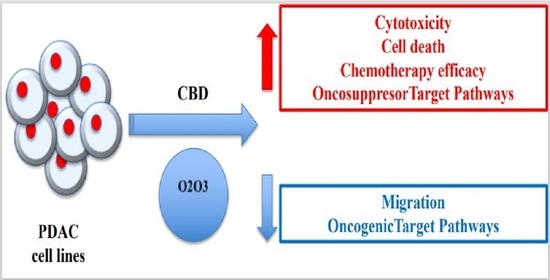 “Considering the advantages of using medicinal herbs as supplementary treatments to sensitize conventional anti-cancer drugs, studying functional mechanisms and regulatory effects of Echinacea purpurea (as a non-cannabinoid plant)
“Considering the advantages of using medicinal herbs as supplementary treatments to sensitize conventional anti-cancer drugs, studying functional mechanisms and regulatory effects of Echinacea purpurea (as a non-cannabinoid plant) 
and Cannabis sativa (as a cannabinoid plant) are timely and required.
The potential effects of such herbs on lung cancer cell growth, apoptosis, cell cycle distribution, cellular reactive oxygen species (ROS) level, caspase activity and their cannabinomimetic properties on the CB2 receptor are addressed in the current study.
Results: Echinacea purpurea (EP) root extract induced a considerable decrease in A549 viable cells, showing a time and dose-dependent response. The cell toxicity of EP was accompanied by induction of early apoptosis and cell accumulation at the sub G1 phase of the cell cycle. The elevation of cellular ROS level and caspase 3 activity indicate ROS-induced caspase-dependent apoptosis following the treatment of A549 cells by EP extract. The observed effects of EP extract on A549 growth and death were abrogated following blockage of CB2 using AM630, a specific antagonist of the CB2 receptor. Increasing concentrations of Cannabis sativa (CS) induced A549 cell death in a time-dependent manner, followed by induction of early apoptosis, cell cycle arrest at sub G1 phase, elevation of ROS level, and activation of caspase 3. The CB2 blockage caused attenuation of CS effects on A549 cell death which revealed consistency with the effects of EP extract on A549 cells.
Conclusions: The pro-apoptotic effects of EP and CS extracts on A549 cells and their possible regulatory role of CB2 activity might be attributed to metabolites of both herbs. These effects deserve receiving more attention as alternative anti-cancer agents.”
https://pubmed.ncbi.nlm.nih.gov/33446187/
“Both cannabinoid receptors and naturally occurring cannabinoids, known as phytocannabinoids, have potential therapeutic applications based on their pivotal roles in regulating immunologic responses, alleviating inflammation, tumor cell proliferation, angiogenesis, invasion, and migration. Based on the findings, it can be postulated that EP and CS extracts can inhibit lung cancer cell growth and induce apoptosis and should be considered as an alternative anti-cancer agent in lung cancer.”
https://www.ncbi.nlm.nih.gov/pmc/articles/PMC7809807/


 “Cannabis sativa contains more than 500 constituents, yet the anticancer properties of the vast majority of cannabis compounds remains unknown. We aimed to identify cannabis compounds and their combinations presenting cytotoxicity against bladder urothelial carcinoma (UC), the most common urinary system cancer.
“Cannabis sativa contains more than 500 constituents, yet the anticancer properties of the vast majority of cannabis compounds remains unknown. We aimed to identify cannabis compounds and their combinations presenting cytotoxicity against bladder urothelial carcinoma (UC), the most common urinary system cancer. “Low tetrahydrocannabinol Cannabis sativa products, also known as hemp products, have become widely available and their use in veterinary patients has become increasingly popular. Despite prevalence of use, the veterinary literature is lacking and evidence-based resource for cannabinoid efficacy.
“Low tetrahydrocannabinol Cannabis sativa products, also known as hemp products, have become widely available and their use in veterinary patients has become increasingly popular. Despite prevalence of use, the veterinary literature is lacking and evidence-based resource for cannabinoid efficacy. “Cannabis has long been used for healing and recreation in several regions of the world. Over 400 bioactive constituents, including more than 100 phytocannabinoids, have been isolated from this plant. The non-psychoactive cannabidiol (CBD) and the psychoactive Δ9-tetrahydrocannabinol (Δ9-THC) are the major and widely studied constituents from this plant.
“Cannabis has long been used for healing and recreation in several regions of the world. Over 400 bioactive constituents, including more than 100 phytocannabinoids, have been isolated from this plant. The non-psychoactive cannabidiol (CBD) and the psychoactive Δ9-tetrahydrocannabinol (Δ9-THC) are the major and widely studied constituents from this plant. “∆ 9 -Tetrahydrocannabinol (∆9 -THC), the active phytocannabinoid in cannabis, is virtually an adjunct to the endogenous endocannabinoid signaling system.
“∆ 9 -Tetrahydrocannabinol (∆9 -THC), the active phytocannabinoid in cannabis, is virtually an adjunct to the endogenous endocannabinoid signaling system. “Pancreatic cancer (PC) is related to lifestyle risks, chronic inflammation, and germline mutations in BRCA1/2, ATM, MLH1, TP53, or CDKN2A. Surgical resection and adjuvant chemotherapy are the main therapeutic strategies but are less effective in patients with high-grade tumors.
“Pancreatic cancer (PC) is related to lifestyle risks, chronic inflammation, and germline mutations in BRCA1/2, ATM, MLH1, TP53, or CDKN2A. Surgical resection and adjuvant chemotherapy are the main therapeutic strategies but are less effective in patients with high-grade tumors.
 ‘T-cell acute lymphoblastic leukemia (T-ALL) is a highly heterogeneous malignant hematological disorder arising from T-cell progenitors.
‘T-cell acute lymphoblastic leukemia (T-ALL) is a highly heterogeneous malignant hematological disorder arising from T-cell progenitors. “Colorectal cancer (CRC) has a high mortality rate and is one of the most difficult diseases to manage due to tumour resistance and metastasis. The treatment of choice for CRC is reliant on the phase and time of diagnosis. Despite several conventional treatments available to treat CRC (surgical excision, chemo-, radiation- and immune-therapy), resistance is a major challenge, especially if it has metastasized. Additionally, these treatments often cause unwanted adverse side effects and so it remains imperative to investigate, alternative combination therapies.
“Colorectal cancer (CRC) has a high mortality rate and is one of the most difficult diseases to manage due to tumour resistance and metastasis. The treatment of choice for CRC is reliant on the phase and time of diagnosis. Despite several conventional treatments available to treat CRC (surgical excision, chemo-, radiation- and immune-therapy), resistance is a major challenge, especially if it has metastasized. Additionally, these treatments often cause unwanted adverse side effects and so it remains imperative to investigate, alternative combination therapies. “Cannabis sativa produces hundreds of phytocannabinoids and terpenes.
“Cannabis sativa produces hundreds of phytocannabinoids and terpenes.